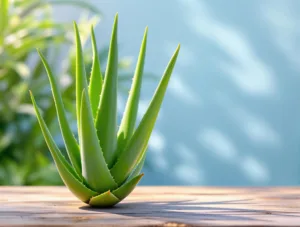Natural Remedies for Acne and Acne Scars: A Comprehensive Guide to Clear, Healthy Skin
Introduction
Acne is one of the most common skin conditions, affecting millions of people worldwide. Whether you’re a teenager grappling with hormonal breakouts or an adult dealing with persistent blemishes, acne can be frustrating and, at times, damaging to self-esteem. While over-the-counter treatments and prescription medications are widely available, many individuals seek natural alternatives to avoid harsh chemicals and potential side effects.
This comprehensive guide explores the causes of acne, effective natural remedies to treat active breakouts, and proven methods to fade acne scars. By incorporating holistic approaches, dietary adjustments, and DIY skincare recipes, you can achieve clearer, healthier skin without relying solely on commercial products.
Understanding Acne: Causes and Types
Before diving into treatments, it’s essential to understand what causes acne and the different forms it can take.
What Causes Acne?
Acne occurs when hair follicles become clogged with oil (sebum) and dead skin cells. Several factors contribute to this process:
- Excess Sebum Production – Hormonal fluctuations, especially during puberty, pregnancy, or stress, can increase oil production.
- Bacterial Growth – Propionibacterium acnes (P. acnes) bacteria thrive in clogged pores, leading to inflammation.
- Dead Skin Cell Buildup – Improper exfoliation can cause pores to become blocked.
- Hormonal Imbalances – Androgens (male hormones present in both sexes) can trigger oil gland activity.
- Diet and Lifestyle – High-glycemic foods, dairy, and stress may worsen acne in some individuals.
Common Types of Acne
- Whiteheads & Blackheads (Comedonal Acne) – Non-inflammatory clogged pores.
- Papules & Pustules – Small red bumps, sometimes filled with pus.
- Nodules & Cysts – Deep, painful, and more likely to cause scarring.
Understanding your acne type helps tailor the right treatment approach.
Natural Remedies for Active Acne
1. Tea Tree Oil
Tea tree oil has potent antibacterial and anti-inflammatory properties, making it effective against P. acnes.
How to Use:
- Dilute 1-2 drops of tea tree oil with a carrier oil (like jojoba or coconut oil).
- Apply directly to blemishes with a cotton swab.
- Leave on overnight and rinse in the morning.
Caution: Always patch-test first, as undiluted tea tree oil can irritate sensitive skin.
2. Honey and Cinnamon Mask
Raw honey is naturally antibacterial, while cinnamon improves circulation and fights bacteria.
Recipe:
- Mix 2 tbsp raw honey with 1 tsp cinnamon powder.
- Apply to clean skin and leave for 10-15 minutes before rinsing.
3. Aloe Vera Gel
Aloe vera soothes inflammation and promotes healing.
How to Use:
- Extract fresh gel from an aloe leaf (or use pure store-bought gel).
- Apply directly to acne spots and leave on for 20-30 minutes before rinsing.
4. Apple Cider Vinegar Toner
Apple cider vinegar (ACV) balances skin pH and fights bacteria.
Recipe:
- Mix 1 part ACV with 3 parts water.
- Apply with a cotton pad as a toner after cleansing.
5. Green Tea Extract
Green tea is rich in antioxidants that reduce sebum production and inflammation.
How to Use:
- Brew green tea, let it cool, and apply to skin with a spray bottle or cotton pad.
- Alternatively, use skincare products containing green tea extract.
Natural Treatments for Acne Scars
Post-inflammatory hyperpigmentation (PIH) and atrophic (indented) scars are common after acne heals. Here’s how to fade them naturally.
1. Rosehip Seed Oil
Packed with vitamins A and C, rosehip oil promotes skin regeneration and reduces discoloration.
How to Use:
- Apply a few drops to scars nightly.
2. Lemon Juice (For Hyperpigmentation)
Lemon’s citric acid acts as a natural bleach for dark spots.
Caution: Can be drying—always dilute with water and avoid sun exposure after use.
3. Turmeric and Yogurt Mask
Turmeric has anti-inflammatory and brightening effects, while yogurt contains lactic acid for gentle exfoliation.
Recipe:
- Mix 1 tsp turmeric with 2 tbsp plain yogurt.
- Apply for 15 minutes, then rinse.
4. Microneedling with a Derma Roller (At-Home Care)
Tiny needles stimulate collagen production, helping to fill in acne scars over time.
Safety Tip: Use a 0.25mm-0.5mm roller, sanitize before and after, and follow proper aftercare.
Diet and Lifestyle Adjustments for Clear Skin
1. Reduce Sugar and Dairy Intake
High-glycemic foods and dairy can trigger breakouts in some individuals.
2. Stay Hydrated
Water flushes out toxins and keeps skin hydrated.
3. Manage Stress
Cortisol (the stress hormone) increases oil production—practice yoga, meditation, or deep breathing.
4. Get Enough Sleep
Skin repairs itself during sleep—aim for 7-9 hours nightly.
Final Summary and Expert Advice
Achieving clear skin requires a combination of effective topical treatments, internal wellness, and patience. While natural remedies can significantly improve acne and scarring, consistency is key.
Final Tips:
- Always patch-test new ingredients.
- Be gentle with your skin—avoid over-scrubbing.
- Combine remedies (e.g., tea tree oil for active acne + rosehip oil for scars).
- If acne persists or is severe, consult a dermatologist.
By embracing a holistic approach—balancing natural skincare, diet, and stress management—you can achieve lasting results and enjoy healthier, radiant skin.
Would you like any modifications or additional details on specific sections?









Add comment